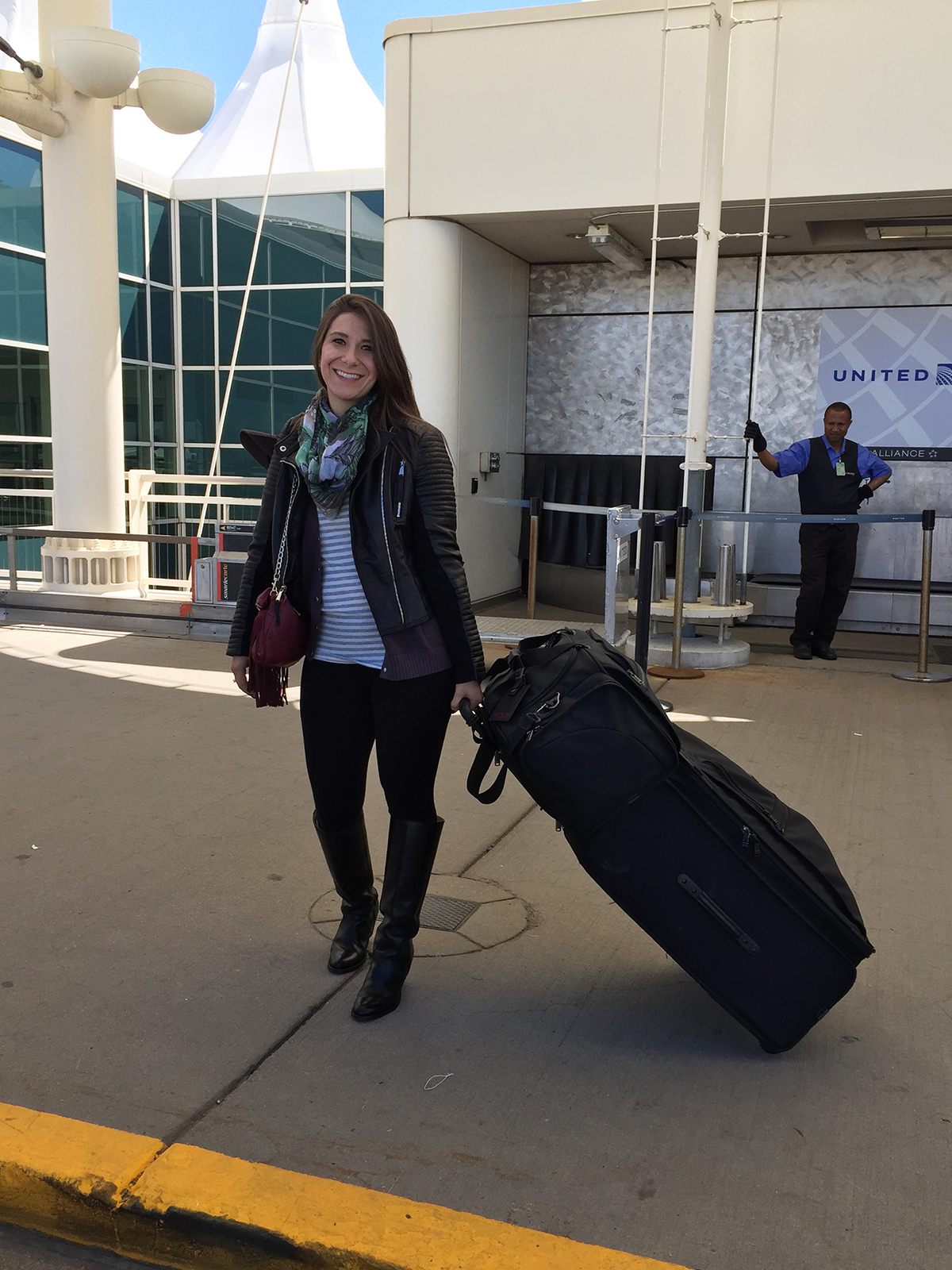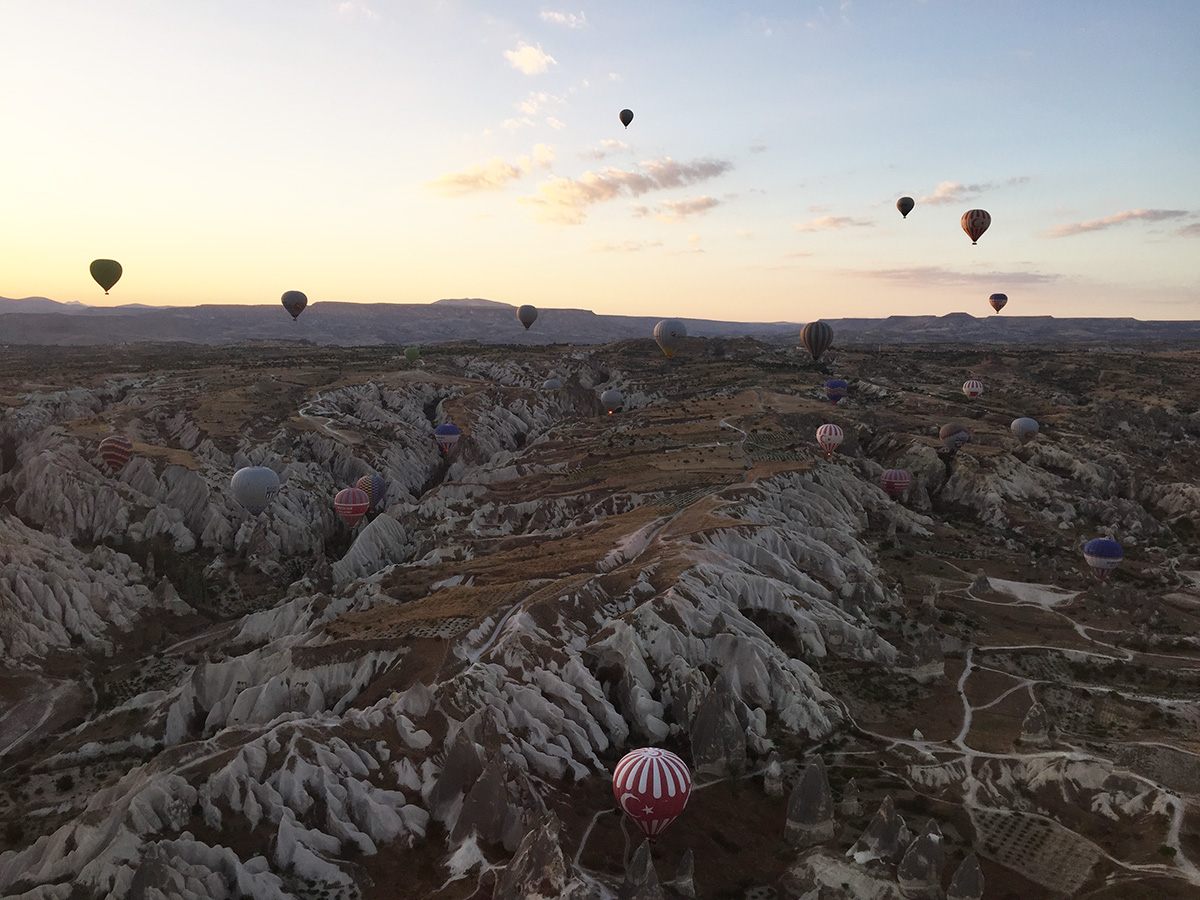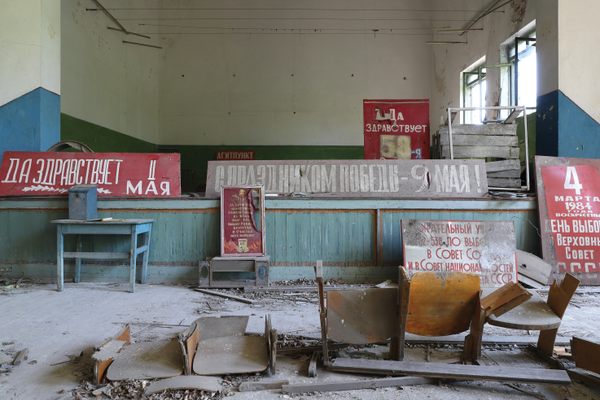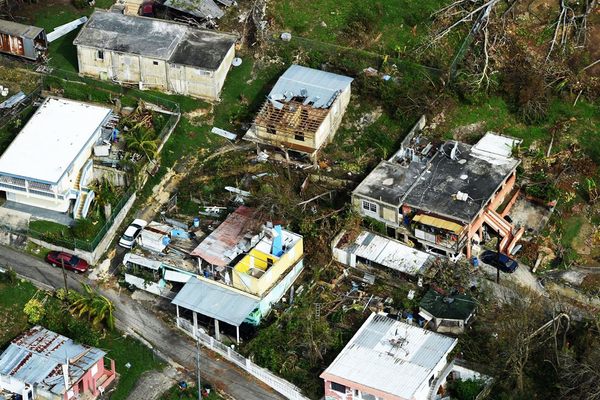Remote Year Promised to Combine Work and Travel. Was It Too Good to Be True?
Thousands applied for the inaugural class of travel start-up Remote Year. Here’s what happened to the 68 people who went.

Remote Year involves working while traveling through twelve countries in twelve months. (Photo: selinofoto/shutterstock.com)
When Nissa Szabo, a 27-year-old tech industry lobbyist from Denver, Colorado, was notified of her acceptance into the inaugural class of Remote Year, she didn’t tell a single soul for ten days. None of her friends. Neither of her parents.
She had known from the minute she read about the program in Fast Company that Remote Year was the kind of experience she had been searching for, but now she had to tell everyone else in her life that she was about to spend the next year traveling and working remotely across the world with 72 people she had never met, in the hands of a company that had only existed for about nine months at the time.
“I wasn’t going back and forth on the decision,” Szabo says. “But how do I communicate this to my family and friends? Because it really is a crazy idea.”
Szabo had traveled in a similar way before, a two-week trip to Bali, Indonesia, with a travel group for young professionals called Under30Experiences. When someone linked to the story about Remote Year on the Under30Experiences Facebook group, Szabo was instantly hooked.
It was a year-long program, a gigantic commitment compared to her previous experience, but that didn’t bother her. “I don’t know how to explain it,” she says. “It was almost something that I had to do. That feeling was more overwhelming than the feeling of fear.”

Striking scenery in Plitvice, Croatia. (Photo: Joyce Lin)
Remote Year founder Greg Caplan already had one successful startup under his belt. Obaz, a fashion blogging platform that he co-founded in 2011, was acquired by Groupon in April 2014 for $250,000. Caplan was planning to travel and work remotely after wrapping things up at Groupon but didn’t want to do it alone, so he decided to build a company to solve that problem. Four hours and one Squarespace page later, Caplan had launched the Remote Year concept.
Within a month, Remote Year had gotten over 25,000 email signups. By the following spring, the application process was in full swing, and by May 2015, before the company had actually gotten off the ground with its first group, Caplan secured Remote Year’s first round of funding. According to the filing with the Securities and Exchange Commission, the investment clocked in at $175,000, funded by a number of undisclosed investors.
The concept was mindbogglingly ambitious from the very beginning. Remote Year was acting as training wheels for prospective digital nomads — it took out all the hard parts (coordinating travel, setting up accommodations, finding friends) and promised to handle it all in exchange for $2,000 a month plus a non-refundable $3,000 deposit before the trip began.
Caplan and his co-founder, Sam Pessin, had no formal backgrounds in the travel industry – both had graduated from business school at the University of Michigan just a couple years prior to launching the startup.
Remote Year’s first staffers were nearly as green as the founders; most had zero work experience in the travel industry before coming to the company. Jesse Gross, who graduated from the University of Michigan around the same time as Caplan and Pessin, had been working at an investment firm in Chicago before joining Remote Year as its director of partnerships. Trish Kennelly, Remote Year’s VP of program operations, was formerly a project manager at a real estate company. Will Gassenheimer, the group’s VP of global operations, was previously a management consultant at Accenture.
Nevertheless, here they were, about to take on the responsibility of providing accommodations, setting up workspaces, and coordinating travel for what was initially supposed to be 100 people from all around the world. The inaugural class would hit twelve cities in twelve months, in this order: Prague, Czech Republic; Ljubljana, Slovenia; Dubrovnik, Croatia (which was later switched to Cavtat, Croatia); Istanbul, Turkey; Penang, Malaysia; Ko Tao, Thailand (which was later switched to Ko Phangan, Thailand); Hanoi, Vietnam; Kyoto, Japan; Buenos Aires, Argentina; Mendoza, Argentina (which was later switched to Montevideo, Uruguay); Santiago, Chile; and Lima, Peru.

Szabo at Denver International Airport en route to Prague, for the start of her Remote Year. (Photo: Nissa Szabo)
It was a wild proposition, and a ton of people wanted in on the experience. Caplan and Pessin sifted through thousands of applicants to pluck out the prime people for Remote Year’s first trip. For the lucky few who made it all the way through three rounds of interviewing, Remote Year asked for a $3,000 deposit within two weeks of the initial acceptance email.
Greg Underwood, a 41-year-old video game programmer from San Francisco, ran a background check on Caplan and the company before handing over his deposit. Some travelers had lawyer friends look over their individual Remote Year contracts beforehand. Others just took a chance.
“It’s so weird, I look back at this whole year on this program and I think, oh my god — It’s almost crazy to put all your trust in this program that has never existed and hand over that money,” says Katelyn Smith, who also saw the Fast Company article and joined the program from Canada. “The only thing I thought was, ‘OK, if I pay this $3,000 and the program doesn’t exist, it’s just going to be a really expensive flight to Prague.’ But I barely even thought of that. I had no reservations.”
With the exception of a few small bar meetups in a handful of U.S. cities, no one had met face-to-face before landing in Europe. “This isn’t like meeting in a bar down the street, you know, you’re all going to meet in Prague,” says Dan Kaplan, a software engineer from Chicago. “You needed people who had some real skin in the game, because obviously this type of program is going to attract anybody and everybody. This is the part where it becomes real.”
By the time the deadline arrived, 68 people had put down a deposit and booked a flight to Prague, where they would meet up with Remote Year’s six staff members, who would hopefully be waiting for them at the airport.
Luckily, that trust was matched across the Atlantic. In preparation for their first Remote Year group, Caplan, Pessin, and their small crew had booked hotels across the city and set up workspaces in advance. The internet was fast and reliable. Everything was under control.

A workspace in Prague during Cassandra Utt’s Remote Year. (Photo: Cassandra Utt)
Multiple people described the initial couple of weeks in Prague as feeling like freshman year of college. The energy was palpable: there was always something to do, tons of people to meet, and the beer never stopped flowing through all of it. Greg Underwood, the video game programmer, had set up a Slack channel for the community and it was constantly pinging with people putting together dinner plans and weekend trips and everything in between.
“The first month was really, really chaotic for people,” recalls one traveler who’s no longer with the program. “I don’t know if I’ve seen a group any drunker.”
College vibes aside, most people were trying to hold down jobs with companies that they had just convinced to let them stay on as employees while working remotely. It was like navigating a vacation with 67 new friends while also trying to show up at work each day and be reasonably productive.
Still, the work component of Remote Year was key, at least from the way the company talked about it. When Caplan and Pessin had originally set up the program, there was a big emphasis on the fact that this experience was about championing remote work and professional development. The FAQ section of the original website included information on how each participant needed a remote job once the program started, although the staff promised to work with each person “to ensure that you have a remote job once the trip begins.”
In practice, employment was pretty much up to the individual to figure out. Szabo lined up a job at a startup that focused on marketing campaigns for crowdfunding projects before she left for Prague. Cassie Utt, an IT project manager for a global manufacturing company, had submitted a nine-page business plan to her bosses making the case for working remotely, and they let her go.

Dan Kaplan in front of Lennon Wall in Prague. (Photo: Dan Kaplan)
Even though Remote Year had specified that participants needed to have jobs before the trip started, Katelyn Smith arrived in Prague without one — nothing had come through in time. Upon joining the group, though, she was surprised and relieved to find that she wasn’t the only one without a job to do. In fact, Remote Year’s staff never seemed concerned by her work status.
According to an informal record kept among participants, only 29 people came into the program with full-time employment. Seven were employed part-time, six had freelance gigs lined up, and 26 people weren’t employed at all when the trip started. (Smith ended up securing a job with an online marketing company in Prague, and started a blog called The Remote Nomad.)
Beyond the workday, or lack of one, life as a Remote Year participant could seem like a nonstop adventure. All the things that one would normally do on vacation — skydiving! scuba diving! caving! renting a plethora of party boats!— were still at the group’s fingertips. It was also, in the words of Szabo, an “incredible social experiment.” Sub-groups solidified, cafeteria-like cliques were born; the dynamics resembled a tiny, mobile American high school.
That’s not to say that the group didn’t take advantage of their access to the world. Remote Year kept a blog documenting each week of the trip and the posts blurred into a steady stream of gorgeous plates of local food, dispatches from weekend trips in neighboring cities, hikes around stunning natural wonders, and enough Instagrammable sunset moments to last a lifetime.
“FOMO was a very frequent phrase used to describe people’s feelings,” says Britanny Carter, a former group member who left Remote Year to travel and work on her own. She estimates that at least one person was putting together a trip to a nearby country every weekend, and since not everyone had the same work constraints, some people were able manage this constant travel schedule. For those that couldn’t, sometimes it felt like getting left behind.
“My FOMO hit so hard in Ljubljana that I was only in Ljubljana for one weekend,” says Carter. “Every single weekend I was somewhere else because of weekend trips that I didn’t want to miss out on.”

Joyce Lin in Berlin. (Photo: Joyce Lin)
When people traveled, they often did it in small groups with each other, bringing along a comfortable blanket of American familiarity wherever they went. Essentially, if you never wanted to put yourself in the position of navigating different cultures by yourself, you didn’t have to.
It didn’t help that there wasn’t a ton of racial and cultural diversity on the staff and within the group, which led to embarrassing cultural missteps. Joyce Lin, a project manager from L.A., witnessed a moment on the beach in Croatia where a couple of group members were trying to swim out to an inflatable obstacle course anchored in the water after hours. A local man tried to communicate to the group that that was not allowed, and a Remote Year staff member wondered aloud in English if they could just give money to the guy to make him go away, since the local population was not wealthy.
“If I travel on my own, I am forced to be in the position of the learner,” Lin says. “People are not going to cater to me. I’m the minority, I’m forced to learn how the local culture is and I’m forced to blend in with that, right? But then when we are in a group we have this presence that changes the way we interact with the places we are going into.”
Lin was anxious about what was going to happen when the group went to Asia; people were already making comments in front of her about how it was going to be “so ghetto.” When they stayed in Kyoto, Japan, Lin had fellow travelers unintentionally ignore her several times because, as they told her, they had gotten used to mentally tuning out all the Asian faces around them.
“I think that is why the lack of diversity on the staff and the team is important,” says Lin. “If you’re all from mainstream American culture where everything caters to you, I don’t think people have as much perspective in that way.”

A street in Ljubljana, Slovenia, where the accommodation that was arranged for the Remote Year travelers was called out to be the worst on the trip. (Photo: Oleg Podzorov/shutterstock.com)
According to Remote Year’s lengthy list of terms and conditions that each traveler agreed to at the beginning of the trip, the company was responsible for providing places to live and work in each country but the actual specifics on that were vague and, in reality, varied greatly month to month.
The accommodations were a total crapshoot: one month the group was settled into boutique hotels in the Czech Republic, the next month they were slapping off bugs in a Slovenian high school dorm. The third month was spent in seaside apartments in Croatia, the fourth month in the windowless basement of a university dorm in Turkey. Participants were lucky to get reliable internet connection on a daily basis.
Clean beds, access to wifi, a pot to brew coffee — these were all basic amenities that no one had planned on worrying about, and morale went south pretty early on when the reality of the trip didn’t line up with many people’s expectations.
Mutiny broke out among the group in the third month. Each person is able to opt out of any month on the Remote Year journey, travel on their own, and rejoin the group later (at a 50 percent discount for the month). One of the participants, Kai Law, knew that the sixth stop on the tour, Ko Phangan, Thailand, was a tiny beach locale known for its party atmosphere. Word got around that Law was planning to go to Chiang Mai, Thailand, instead (a city he had lived in and knew to be accommodating for remote workers) and over half the group ended up opting out for that month, and going with him. Some did not come back.
Arikia Millikan, a writer who currently lives and works in Japan, was one of the first to walk away from Remote Year. She had traveled extensively outside of the U.S. prior to joining Remote Year, and tried to provide constructive feedback to the staff, especially in Slovenia, where many people were clearly disappointed with the company’s accommodations that month. When it became apparent that the staff wasn’t receptive to her feedback, and the situation didn’t look like it was going to improve, she decided to leave.
“I wanted it to work out,” Millikan says. “It was not ideal to have signed up for this year-long journey and have planned my time and my money and aspects of my career around it only to find that they were complete amateurs.”
When Millikan left after the month in Slovenia, she was supposed to pay an early exit fee of $2,500, as stated in each participant’s contract. But there was no across-the-board enforcement of that policy. She didn’t pay any of the fee but when Rafael Bertolli left a month later, when the group was in Croatia, he paid the full $2,500 and was assured that if he ever wanted to rejoin Remote Year there’d be a discount waiting for him. When Carter left after Turkey, she paid the whole fee but wasn’t offered a future discount. When Law left during the group’s fifth month in Malaysia, he paid about half and then stopped making payments when he heard it wasn’t really that mandatory after all.

A hot air balloon ride, Cappadocia, Turkey. (Photo: Nissa Szabo)
When Caplan had started the company, he wanted to travel the world with a bunch of his best buds. With that kind of tone set at the beginning, personal and professional boundaries were blurred in ways that made it difficult to, say, enforce an exit fee when you knew your friend was having trouble coming up with the cash. At the beginning of the trip, Caplan and his staff traveled with the group, worked with the group, partied with the group. When complaints surfaced, it became a matter of: do I treat this person like my good friend or a client with my company? More often than not, they let things slide under the leeway of friendship.
“I think they have a special relationship with us because we are their first class,” says Lin. “But I think they were a lot more lenient with us in terms of dealing with us on a case-by-case basis.”
By the end of the fourth month in Istanbul, Remote Year had lost about 25 percent of the group. The early exodus was clearly not anything that the staff had planned for, and coupled with the temporary desertion to Chiang Mai, they knew they needed to make a change. An incentive was needed to keep more people from walking out the door. A big incentive.
The staff called everyone together and announced that they were waiving the monthly $2,000 fee for the group’s upcoming month in Hanoi, Vietnam (scheduled as the next destination after Ko Phangan). On top of that, every month thereafter would be discounted by $500 for each person.
Jessie Cooper, a 34-year-old who left her job as a sales director at a startup in New York to participate in Remote Year, had been chronicling the travel experience on a podcast called The Weekly Wandery. She described the staff announcement in an episode, saying it was the first time she could remember where the staff apologized for not providing a better travel experience so far. She called the new discounts “a hell of a Hail Mary move” for the company, but noted that it looked like it was what the group needed to lift morale.
On that same episode, Cooper invited Caplan on the podcast to give the official Remote Year perspective on how the trip was going so far. “Personal growth is hard,” Caplan said when Cooper asked him about the current mood of the group. “Figuring out who you want to be and what you want to do and how to react to all of these new, crazy stimuli is difficult. And being content with confusion is hard.”
Throughout the interview, Caplan wasn’t so much concerned with addressing concrete breaches in the Remote Year contract as he was talking about the deep, introspective journey of self discovery that the participants were wading through. And, although Cooper had brought up the shrinking size of the group and leadership missteps when she recorded on her own, the interview environment was more strenuous. Cooper gave Caplan a list of questions beforehand to mitigate some of the tension, and when she was preparing to discuss the new developments on air, Pessin asked her not to disclose the amount of the group’s discount. (Remote Year did not return multiple requests for comment for this story.)
“This is a hard process,” Caplan told Cooper. “We’re changing everything every month and you have to find where you’re gonna work, a comfortable place to relax, a comfortable place to go grocery shopping, a comfortable place to eat and meet new people and all in this new environment where people speak a different language and you don’t understand their customs and you need to learn all these things.”
“It’s definitely a lot for a lot of people,” he admitted.

The Remote Year group spent March 2016 in Montevideo, Uruguay, where there were further complaints about accommodation. (Photo: Matyas Rehak/shutterstock.com)
The constant state of flux made big life changes harder to handle, and Remote Year didn’t have an official support system in place to help people through rough times. The company had promised that if anyone lost a job during the trip, “we will have a team of career counselors on staff to help the participant quickly get a new job,” according to the FAQ section on the old version of Remote Year’s site. But when people actually did start to lose their jobs, there were no career counselors or staff members to help line up another source of income.
Szabo, the former lobbyist who had taken a job with a tech startup at the beginning of the trip, found out via email in Cavtat, Croatia, that her boss had disbanded the company. It was a complete shock, and suddenly she had to scramble to find other sources of income.
She immediately reached out to staff members to let them know what had happened, expecting a support system to kick in as promised. She listed her skill sets on a form and was told that the staff would send it out to prospective employers, but never heard a word about career help after that. Szabo ended up picking up contract work along the way that’s helped sustain her on the trip.
Remote Year has since backed down on promising professional development within the program. The current FAQ section on Remote Year’s website no longer says that staff will work with participants to ensure that each traveler can lock down a remote job when the trip starts. The section about having career counselors in place to help people who lose their jobs has been removed.
By now, in the group’s last month, Szabo estimates that at least eight people lost jobs while in the program. According to that informal record kept among participants, just 50 percent of the current group is employed full-time. Once 68 people strong, Remote Year’s first cohort is down to 43 people (42 original members plus one new traveler who joined the group in February). At least one more participant is planning to leave before Remote Year finishes up its last month in Lima, Peru.
March was spent in Montevideo, Uruguay, where, as Cooper put it, the group was living in “a straight-up roach motel.” Once again, participants gave disgruntled feedback, and the staff acknowledged their failures. One week before the group was planning to ship out to Santiago, Chile, everyone was given a free weekend vacation.
Multiple travelers expressed that they were willing to overlook Remote Year’s earlier mistakes because hey, it’s a startup, and not everything is going to work perfectly in the very first year. But incidents like in Uruguay, where the rooms were just as intolerable as they had been in Slovenia, were harder to overlook because the same mistakes were being made repeatedly. “I want to see them build and I want to give them feedback and grow, but at the same time where do you decide as a customer, as a client, that maybe the value isn’t [worth] what you’re paying?” asks Szabo.
She plans to finish out the Remote Year program in Peru, and after that, the door’s wide open. “I feel a little overwhelmed but at the same time, I’m excited,” she says. “I almost get to start over–not in a bad way, but like, I don’t have a home. I don’t have a car. I feel like I can go anywhere and set up a life.”
For all that went haywire with the first group, the company is still growing at a tremendous rate. As Remote Year’s first group wraps up its last couple of weeks, Remote Year Two is currently in Peru, its fourth stop, and Remote Year Three is spending its second month in Bolivia. Remote Year’s fourth group ships out in June, and its fifth group in August. Last week, the company sent out a newsletter announcing that over 100,000 people had applied for open spots on the trips.
The less easily quantifiable aspects of spending a year working remotely while touring the world with dozens of people–the personal growth, the deep friendships that come from shared experiences–these are the things that Remote Year has excelled at, according to travelers who are sticking it out for the full year. But the practical things that Remote Year, as a business, promises to deliver on continue to fall through the cracks while thousands of people sign up for the ride.











Follow us on Twitter to get the latest on the world's hidden wonders.
Like us on Facebook to get the latest on the world's hidden wonders.
Follow us on Twitter Like us on Facebook